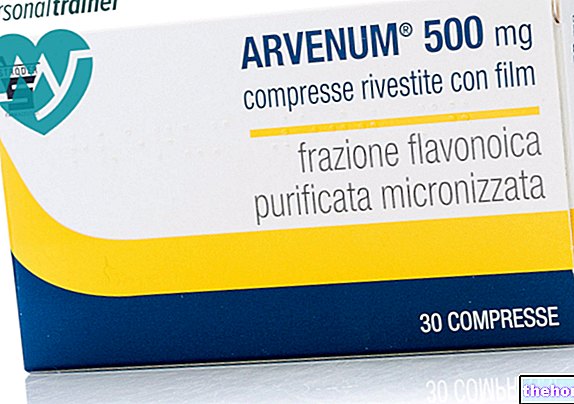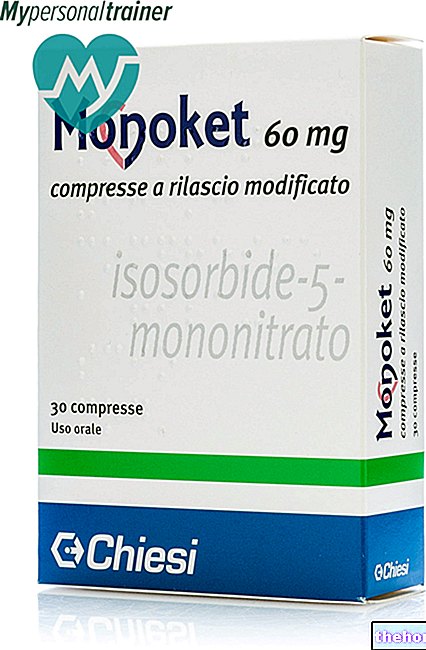Active ingredients: Folic acid (Calcium folinate)
CITOFOLIN® 15 mg tablets
CITOFOLIN® 15 mg powder and solvent for oral solution
CITOFOLIN® 15 mg / ml powder and solvent for solution for injection
Why is Citofolin used? What is it for?
Pharmacotherapeutic group
Anti-anemic
Therapeutic indications
The general therapeutic indication of Citofolin is the correction of a state of folate deficiency however realized. Citofolin is therefore indicated in all anemic forms of folate deficiency due to increased demand, reduced use, insufficient dietary intake of folate. Furthermore, Citofolin is useful. as an antidote to excessive doses of folic acid antagonists and to combat the side effects induced by aminopterin or methotrexate.
Contraindications When Citofolin should not be used
Hypersensitivity to the components or to other closely related substances from a chemical point of view.
Precautions for use What you need to know before taking Citofolin
Citofolin should not be administered for the treatment of pernicious anemia or other megaloblastic anemia due to B12 deficiency except in association with it; otherwise, remission of haematological signs could occur, while neurological manifestations would remain progressive. Therapy should therefore be conducted under haematological control. In the treatment of folic acid antagonist overdose, administration of Citofolin should be performed within one hour if possible, with administration after a period of 4 hours generally being less effective.
Dosage and method of use How to use Citofolin: Dosage
Citofolin can be administered orally, by infusion, intravenously or intramuscularly.
Use in the treatment of folate deficiency anemia: the average oral dose of Citofolin can be indicated in a tablet, capsule or vial (equal to 15-25 mg of folinic acid) per day or every other day according to medical prescription. The parenteral route (intramuscular or intravenous) will be reserved for cases in which the oral route is not practicable; the dosages to be used will be defined by the doctor in relation to the haematological picture. Treatment with Citofolin must be prolonged until complete remission of the clinical signs of folic deficiency and normalization of the haematological picture.
Use of Citofolin in the context of particular protocols of antiblastic chemotherapy with high doses of methotrexate: based on the most recent acquisitions, to improve the therapeutic index of methotrexate at high doses, Citofolin is used in a sequential antidotic treatment (Citofolin "rescue" ). In this way it was possible to record a better control of the tumor pathology, without significant increases in toxicity. The therapeutic protocol provides for the use of Citofolin:
- parenterally, in the first phase corresponding to antidotism for competition
- orally, in the second phase in which mainly the biochemical-metabolic component comes into play.
At the present time, however, general dosage schedules are not defined with precision. Since calcium folinate is a methotrexate antagonist, their concomitant administration can only be implemented when, in individual cases, a specific therapeutic protocol has been defined. For this purpose it is advisable to consult the most recent literature on the subject.
Antidote in case of overdose of methotrexate: Citofolin (calcium folinate), specific antidote of methotrexate, allows to neutralize the toxic effects exerted by the antimetabolite on the hematopoietic system and on the mucous membranes of the digestive system. In its role as an antidote, Citofolin is used at different dosages depending on the effect to be obtained.
In cases of accidental overdose, Citofolin for intravenous infusion (up to 100 mg in the first 12 hours) is recommended to obtain a competition effect; to obtain a metabolic biochemical effect, Citofolin is recommended by intramuscular or intravenous or oral route (15 mg every 6 hours for 4 doses).
In cases of side effects from conventional doses of methotrexate, cytofolin is recommended intramuscularly or intravenously or orally (15 mg every 6 hours for 4 doses).
In cases of accidental administration, Citofolin should be taken in doses equal to or higher than those of methotrexate within the first hour, with subsequent administration being less effective.
The administration of Citofolin must be carried out carefully in order to avoid the danger of allergic reactions and side effects.
How to use the vials of oral solution: at the moment of use, remove the capsule and press the protruding cap until the powder falls into the vial. Shake until completely dissolved and then drink. The solution can be diluted with water.
Side Effects What are the side effects of Citofolin
Up to now, for Citofolin there are no toxic effects due to overdose even for doses much higher than the therapeutic ones. Administration of the product may be followed by general hypersensitivity reactions (fever, urticaria, arterial hypotension, tachycardia, bronchospasm, anaphylactic shock).
The patient is invited to report to the attending physician the possible occurrence of undesirable effects not described.
Expiry and Retention
Expiry: see the expiry date indicated on the package.
This date refers to the product in intact packaging, properly stored.
Warning: do not use the medicine after the expiry date indicated on the package.
Other information
Composition
15 mg tablets:
- Active ingredient: anhydrous calcium folinate 16.2 mg (equivalent to folinic acid 15 mg);
- Excipients: lactose monohydrate, talc, magnesium stearate, microcrystalline cellulose.
15 mg powder and solvent for oral solution:
Separator cap:
- Active ingredient: anhydrous calcium folinate 16.2 mg (equivalent to folinic acid 15 mg);
- Excipients: mannitol. Solution: 70% sorbitol, sodium saccharin, sweet orange essence, methyl p-hydroxybenzoate, propyl p-hydroxybenzoate, purified water.
15 mg / ml powder and solvent for solution for injection:
Dust:
- Active ingredient: anhydrous calcium folinate 16.2 mg (equivalent to folinic acid 15 mg);
- Excipients: mannitol, methyl phydroxybenzoate, propyl p-hydroxybenzoate.
Solvent vial: 1 ml of water p.p.i.
Pharmaceutical form and packaging
- Box of 10 tablets of 15 mg
- Box of 10 vials of 15 mg of powder and solvent for oral solution
- Box of 6 powder vials + 6 solvent vials of 1 ml
Source Package Leaflet: AIFA (Italian Medicines Agency). Content published in January 2016. The information present may not be up-to-date.
To have access to the most up-to-date version, it is advisable to access the AIFA (Italian Medicines Agency) website. Disclaimer and useful information.
01.0 NAME OF THE MEDICINAL PRODUCT
CITOFOLIN
02.0 QUALITATIVE AND QUANTITATIVE COMPOSITION
15 mg tablets
Active principle:
calcium folinate anhydrous 16.2 mg
(equivalent to 15 mg folinic acid).
15 mg powder and solvent for oral solution
Separator cap
Active principle:
calcium folinate anhydrous 16.2 mg
(equivalent to 15 mg folinic acid).
3 mg / ml powder and solvent for solution for injection
1 vial of powder contains:
Active principle:
calcium folinate anhydrous 3.24 mg
(equivalent to 3 mg folinic acid).
15 mg / ml powder and solvent for solution for injection
1 vial of powder contains:
Active principle:
calcium folinate anhydrous 16.2 mg
(equivalent to 15 mg folinic acid).
03.0 PHARMACEUTICAL FORM
Tablets, powder and solvent for oral solution, powder and solvent for solution for injection.
04.0 CLINICAL INFORMATION
04.1 Therapeutic indications
The general therapeutic indication of Citofolin is the correction of a state of folate deficiency which has nevertheless occurred.
Citofolin is therefore indicated in all anemic forms of folate deficiency due to increased demand, reduced use, insufficient dietary intake of folate.
Furthermore, Citofolin is useful as an antidote to excessive doses of folic acid antagonists and to combat the side effects induced by aminopterin or methotrexate.
04.2 Posology and method of administration
Citofolin can be administered orally, by infusion, intravenously or intramuscularly.
Use in the treatment of folate deficiency anemia: the average oral dosage of Citofolin can be indicated in a tablet or a vial (equal to 15 mg of folinic acid) per day or every other day according to medical prescription. The parenteral route (intramuscular or intravenous) will be reserved for cases in which the oral route is not practicable; the dosages to be used will be defined by the doctor in relation to the haematological picture. Treatment with Citofolin must be prolonged until complete remission of the clinical signs of folic deficiency and normalization of the haematological picture.
Use of Citofolin in the context of particular protocols of antiblastic chemotherapy with high dosages of methotrexate: based on the most recent acquisitions, to improve the therapeutic index of methotrexate at high doses, Citofolin is used in a sequential antidotic treatment (Citofolin "rescue"). In this way it was possible to obtain a better control of the tumor pathology, without significant increases in toxicity.
The therapeutic scheme provides for the use of Citofolin:
- by injecting, in the first phase corresponding to antidotism for competition;
- orally in the second phase in which mainly the biochemical-metabolic component comes into play.
At the present time, however, general dosage schedules are not precisely defined. Since calcium folinate is a methotrexate antagonist, their concomitant administration can only be implemented when, in individual cases, a specific therapeutic protocol has been defined. For this purpose it is advisable to consult the most recent literature on the subject.
Antidote in case of overdose of methotrexate: Citofolin, specific antidote of methotrexate, allows to neutralize the toxic effects exerted by the antimetabolite on the hematopoietic system and on the mucous membranes of the digestive system. In its role as an antidote, Citofolin is used at different dosages depending on the effect to be obtained.
In cases of accidental overdose, Citofolin for intravenous infusion (up to 100 mg in the first 12 hours) is recommended to obtain a competition effect; to obtain a biochemical-metabolic effect, Citofolin is recommended for intramuscular or intravenous or oral route (15 mg every 6 hours for 4 doses). In cases of side effects from conventional doses of methotrexate, cytofolin is recommended intramuscularly or intravenously or orally (15 mg every 6 hours for 4 doses). In cases of accidental administration, Citofolin should be taken in doses equal to or higher than those of methotrexate within the first hour, with subsequent administration being less effective.
04.3 Contraindications
Hypersensitivity to the components or to other closely related substances from a chemical point of view.
04.4 Special warnings and appropriate precautions for use
In the treatment of folic acid antagonist overdose, administration of Citofolin should be performed within one hour if possible, with administration after a period of 4 hours generally being less effective.
Citofolin should not be administered for the treatment of pernicious anemia or other megaloblastic anemia due to vitamin B12 deficiency except in association with it; otherwise, remission of haematological signs could occur, while neurological manifestations would remain progressive. Therapy should therefore be conducted. under haematological control.
The administration of Citofolin must be carried out carefully in order to avoid the danger of allergic reactions and side effects.
See also point 4.2
04.5 Interactions with other medicinal products and other forms of interaction
They have not been reported for Citofolin.
04.6 Pregnancy and breastfeeding
Nothing to report
04.7 Effects on ability to drive and use machines
No effects attributable to drug administration have ever been reported.
04.8 Undesirable effects
Up to now, for Citofolin there are no toxic effects due to overdose even for doses much higher than the therapeutic ones. Administration of the product may be followed by general hypersensitivity reactions (fever, urticaria, arterial hypotension, tachycardia, bronchospasm, anaphylactic shock).
The patient is invited to report to the attending physician the possible occurrence of undesirable effects not described.
04.9 Overdose
See point 4.8
05.0 PHARMACOLOGICAL PROPERTIES
05.1 Pharmacodynamic properties
Citofolin in the organism is rapidly converted into folinic acid (5-formyl-tetrahydrofolic acid), an active form of folic acid (itself inactive), therefore ready to act biochemically in the synthesis and metabolism of nucleic acids and proteins.
Folinic acid is also essential for the production of red blood cells, intervening in the maturation phases from megaloblasts and normoblasts: it is known, in fact, that a classic megaloblastic anemia is accompanied by low levels of folate in the serum and red blood cells.
The study of folate deficiency pathology has also made it possible to highlight folinic acid deficient conditions, which generally precede the onset of the overt anemic picture, which can be successfully treated by administering calcium folinate.
Folate is involved in the synthesis of methionine starting from homocysteine.
05.2 Pharmacokinetic properties
Folinic acid, administered orally, is rapidly absorbed, resulting in maximum folatemia after about 60 minutes.
For both oral and parenteral administration, it is converted mainly to 5-formyl-tetrahydrofolic and 5-methyl-tetrahydrofolic acid, which are distributed to both normal and cancerous tissues. Both metabolites are therefore eliminated predominantly via the renal emunctorium.
05.3 Preclinical safety data
Per os the LD50 of the preparation is higher than 7000 mg / kg in mice.
Intravenously, the LD50 was 507 mg / kg in the mouse and 414 mg / kg in the rat.
Furthermore, the preparation was well tolerated and free of toxic phenomena in the subacute toxicity tests conducted by parenteral route in the rabbit, rat and dog.
06.0 PHARMACEUTICAL INFORMATION
06.1 Excipients
- 15 mg tablets: Excipients: Lactose monohydrate, Talc, Magnesium stearate, Microcrystalline cellulose.
- 15 mg powder and solvent for oral solution
Separator cap: Excipients: Mannitol.
Vial: Each vial contains: Sorbitol 70%, Saccharin sodium, Sweet orange essence, Methyl p-hydroxybenzoate, Propyl p-hydroxybenzoate. Purified water q.s.
- Powder and solvent for solution for injection:
1 vial of powder contains: Excipients: Mannitol, Methyl p-hydroxybenzoate, Propyl p-hydroxybenzoate.
Solvent ampoule contains: Water p.p.i.
06.2 Incompatibility
None known.
06.3 Period of validity
15 mg tablets: 3 years.
15 mg powder and solvent for oral solution: 2 years.
3 mg / ml and 15 mg / ml powder and solvent for solution for injection: 5 years.
06.4 Special precautions for storage
The expiry date indicated refers to the product in intact packaging, correctly stored.
06.5 Nature of the immediate packaging and contents of the package
- 15 mg tablets: amber glass bottle type III, according to F.U. IX Ed., With plastic cap or PVC-Moplen / Aluminum blister.
Box containing a bottle of 10 tablets 15 mg
Box containing a blister of 10 tablets 15 mg
- Powder and solvent for oral solution: white silk-screened glass bottles with separator cap consisting of a neutral polyethylene tank cap and colored polypropylene shearer; tear-off removable plastic cap.
Box of 10 vials of 15 mg of powder and solvent for oral solution
Box of 10 vials of 25 mg of powder and solvent for oral solution
- Powder and solvent for solution for injection:
Dust: yellow glass vials, type I according to F.U. IX Ed.
Solvent: colorless glass vials, type I according to F.U. IX Ed.
Box of 6 ampoules of 3 mg of powder + 6 solvent ampoules
Box of 6 powder vials + 6 solvent vials of 1 ml
06.6 Instructions for use and handling
How to use the vials of powder and solvent for oral solution: at the moment of use, remove the capsule and press the protruding cap until the powder falls into the vial. Shake until completely dissolved and then drink. The solution can be diluted with water.
07.0 MARKETING AUTHORIZATION HOLDER
BRACCO S.p.A. - Via E. Folli, 50 - Milan
08.0 MARKETING AUTHORIZATION NUMBER
15 mg tablets, 10 tablets in bottle or blister - A.I.C. n. 024632085
15 mg powder and solvent for oral solution, 10 vials - A.I.C. n. 024632097
3 mg / ml powder and solvent for solution for injection, 6 ampoules 1 ml - A.I.C. n. 024632061
15 mg / ml powder and solvent for solution for injection, 6 powder vials + 6 solvent vials of 1 ml - A.I.C. n. 024632073
09.0 DATE OF FIRST AUTHORIZATION OR RENEWAL OF THE AUTHORIZATION
15 mg tablets, 10 tablets: 30 July 1987/1 June 2005
15 mg powder and solvent for oral solution, 10 vials: 14 August 1992/1 June 2005
3 mg / ml powder and solvent for solution for injection, 6 ampoules 1 ml: 24 March 1982/1 June 2005
15 mg / ml powder and solvent for solution for injection, 6 powder ampoules + 6 1 ml solvent ampoules: 24 March 1982/1 June 2005
10.0 DATE OF REVISION OF THE TEXT
June 2010




























